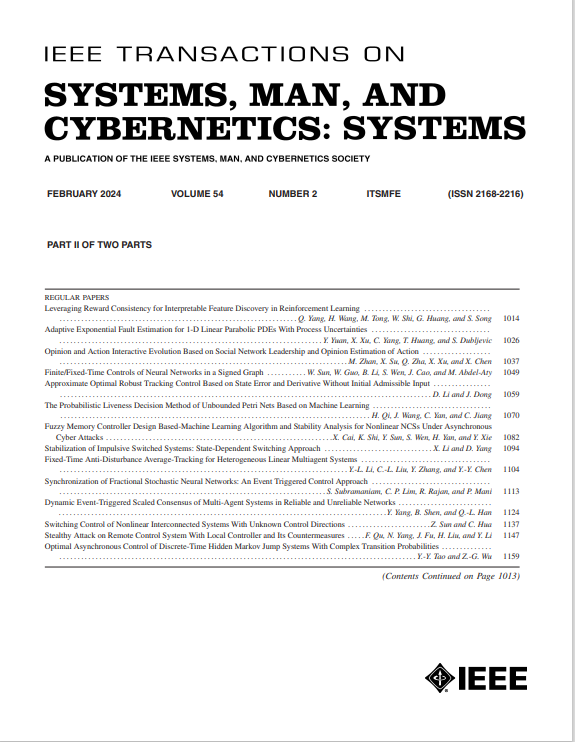不充分冗余机械臂运动规划的分段变系数双准则优化方法
IF 8.7
1区 计算机科学
Q1 AUTOMATION & CONTROL SYSTEMS
IEEE Transactions on Systems Man Cybernetics-Systems
Pub Date : 2025-08-19
DOI:10.1109/TSMC.2025.3594148
引用次数: 0
摘要
针对多末端执行器任务中存在的冗余度不足和收敛速度慢的问题,提出了一种分段变增益双准则优化(PVDO)方法来求解冗余度不足的末端执行器运动规划问题。为了实现这一目标,将收敛系数设计为分段变化,并将末端执行器任务分为两个阶段。初始阶段只考虑末端执行器位置任务,采用固定系数收敛方法,可以同时考虑末端执行器任务和二次任务优化。第二阶段同时考虑末端执行器的位置和姿态,采用时变系数对末端执行器任务进行求解。收敛系数随时间变化以提高收敛速度,特别是在任务规划后期误差较小的情况下。这样可以保证在机械臂冗余度不足的情况下对二次任务进行优化,并以较快的速度完成末端执行器任务规划。最后,通过实验验证了该方法在避障和关节极限避障中的有效性。本文章由计算机程序翻译,如有差异,请以英文原文为准。
A Piecewise Varying Coefficient Dual Criterion Optimization Method for Motion Planning of Manipulators With Insufficient Redundancy
In order to solve the insufficient redundancy problem and slow convergence in multiple end-effector tasks, a piecewise varying-gain dual-criterion optimization (PVDO) method is proposed for motion planning of insufficient redundant manipulators. To achieve this, the convergence coefficients are designed to be piecewise varying, and the end-effector task is divided into two phases. In the initial phase, only the end-effector position task is considered and the fixed coefficient convergence method is adopted, which can take into consideration both end-effector task and secondary task optimization. In the second phase, the end-effector position and orientation are taken into account concurrently, and time-varying coefficients are used for end-effector task. The convergence coefficients are time varying to enhance the convergence speed, particularly when the errors are small in the later phase of task planning. This can ensure the optimization of secondary tasks when the manipulator is insufficient-redundant, and accomplish the end-effector task planning in a relatively fast speed. Finally, experiments are conducted to demonstrate the effectiveness of the proposed PVDO method in obstacle avoidance and joint limits avoidance.
求助全文
通过发布文献求助,成功后即可免费获取论文全文。
去求助
来源期刊

IEEE Transactions on Systems Man Cybernetics-Systems
AUTOMATION & CONTROL SYSTEMS-COMPUTER SCIENCE, CYBERNETICS
CiteScore
18.50
自引率
11.50%
发文量
812
审稿时长
6 months
期刊介绍:
The IEEE Transactions on Systems, Man, and Cybernetics: Systems encompasses the fields of systems engineering, covering issue formulation, analysis, and modeling throughout the systems engineering lifecycle phases. It addresses decision-making, issue interpretation, systems management, processes, and various methods such as optimization, modeling, and simulation in the development and deployment of large systems.
 求助内容:
求助内容: 应助结果提醒方式:
应助结果提醒方式:


